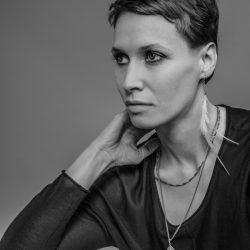
IVONNE DIPPMANN
...Page is loading...
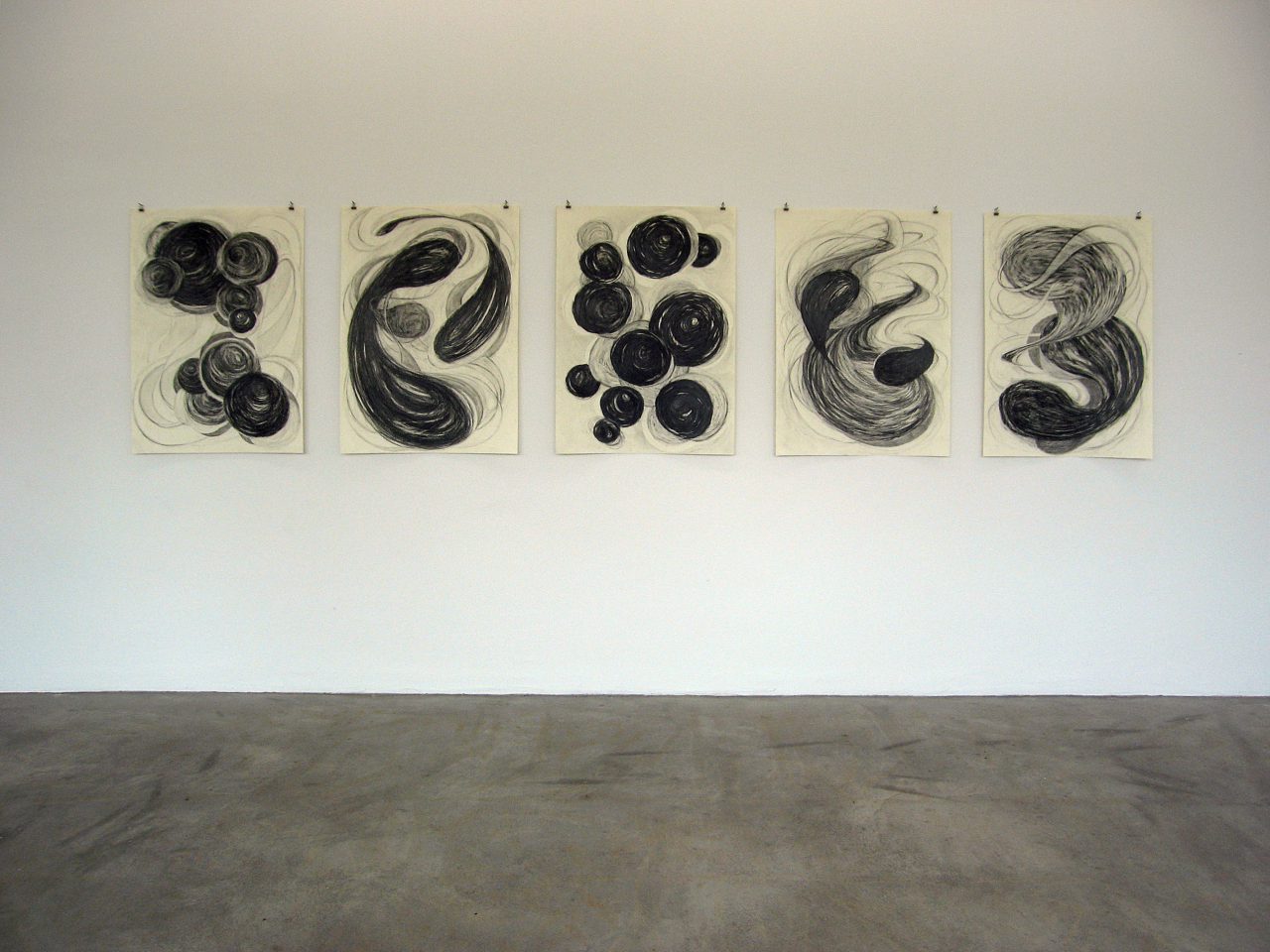
Berlin, Germany
An artist’s body of work is usually held together by style, medium, and material. It helps to identify the artist. But with Laura Bruce, this is not always the case. And yet — as different as the forms of expression are — her work is immediately recognizable through an internal cohesion, a continuity, which continues from series to series. But it would be wrong to simply define her style as something that constantly changes. Like Gerhard...
Read moreAn artist’s body of work is usually held together by style, medium, and material. It helps to identify the artist. But with Laura Bruce, this is not always the case. And yet — as different as the forms of expression are — her work is immediately recognizable through an internal cohesion, a continuity, which continues from series to series. But it would be wrong to simply define her style as something that constantly changes. Like Gerhard Richter, who oscillates between abstraction and representation as a painter, Laura Bruce can also not be tied down and has to try new things after a while. As she puts it: the story has been told. While Richter circumnavigates the medium of painting analytically and questions the canvas academically again and again, Laura Bruce intuitively continues to spin an invisible narrative thread, visually linking the different cultures she has been shaped by — her socialization at a young age in the United States and her present life in Europe.
The American artist, who has lived in Berlin since the early nineties, initially acquired a reputation for her graphite drawings of landscapes. Her large format works of bold strokes, clear contrasts of black and white, and the distinctive representation of trees, glades, and lakes, possess a monumentality and boldness that one would too easily like to attribute to the Midwest. The suggestion of lightweight houses and the sedan cars parked in front also point in this direction. But these places don’t exist. There’s something wrong. Sometimes the trees seem set in motion, rotating around their own axes, at times swirling air rises from the center, as if a tornado is sweeping through the drawing, sometimes organic forms, she calls them “blobs,” condense on the edges. It’s as if a different world is barging in, or a super-reality. The Surrealists introduced this principle of deliberate collision in their works, and this pictorial principle can also be attributed today to painters like Neo Rauch. In Laura Bruce’s landscape drawings, these irritations at first appeared more restrained, but in a much later series they take complete control.
In the drawing series, “Sounds That Clouds Make” the abstract forms become autonomous and perform a type of private dance — you can actually perceive sound, like in a new system of musical notation. Laura Bruce even talks about a musical score, and as a synesthetic she always hears her work. There are no “real” clouds to be seen, but this is obviously sky, a different horizon. Her terrain has shifted from landscape to the heavens. There might not be a direct narrative in this series, but it comes back with even greater force in her word drawings of route directions and the simple listing of objects, plants, or the things you see on the way.
“Follow The Train Tracks” is the beginning line of one of these graphite drawings of route directions. It covers the entire surface of the paper and directs the reader at first along the artist’s former route from the train station to her grandmother’s home in Asbury Park, New Jersey — then to a pond, and then to a lake, where suddenly “you will see a man submerged to his knees in water and a black dog swimming outwards towards a stick.” The present unexpectedly breaks into these matter-of-fact instructions, given to perhaps future walkers or visitors, and the abrupt description of a simple fact leads our imagination ad absurdum. Laura Bruce applies the same principle in this series as in her landscape drawings. You can’t really trust the objects there either, blobs dart in and out between the trunks of trees — but in the word drawings, the irritation creeps in between the lines.
There is another continuation of abstraction in the work “Keeping Count.” Drawn with oil pastels on panel primed with black school board paint, it consists of colorful dashed lines that follow each other in a snake-like fashion, covering the entire surface. These could be words, sentences, or a litany. The content has become overly intricate and completely convoluted. But the title hints at an enumeration, a type of settlement. And once again these lined-up dashes take on a new musical dimension, movement, and rhythm.
Laura Bruce again works with the clash of abstract forms and concrete reality in the series “Nahm Platz auf der Hand” (Mount the Hand), colored pencil interventions on found fairy tale illustrations. The basis of this work is a book with lithographs by Edmund Brüning from 1902, which Laura Bruce found at a flea market. She then drew onto these historical illustrations of Hauff's fairy tales with colored pencils, giving the different images psychedelic elements: rampant knights grow colorful beards, the sky fills with iridescent bubbles, and Peter, the main character in the story “The Cold Heart,” after mounting the hand of the giant, is surrounded by many colorful lassos, as if he were riding a bronco. Laura Bruce crosses the solid world of German fairytales with the blatant joy of a Disney-like reality, a reminiscence of her own childhood. She rattles dignified historicism with fresh, surrealist interventions. The story of Peter, and of the knights and damsels, suddenly takes on a completely different narrative.
At the moment, Laura Bruce is working on a new series of drawings using graphite dust. Landscapes hidden under a turbulence of blues and grays with ascending colorful leaf-like forms. But they can also be abstract shapes, her “blobs,” in their next manifestation, only now more volatile.
Nicola Kuhn, 05/30/2016
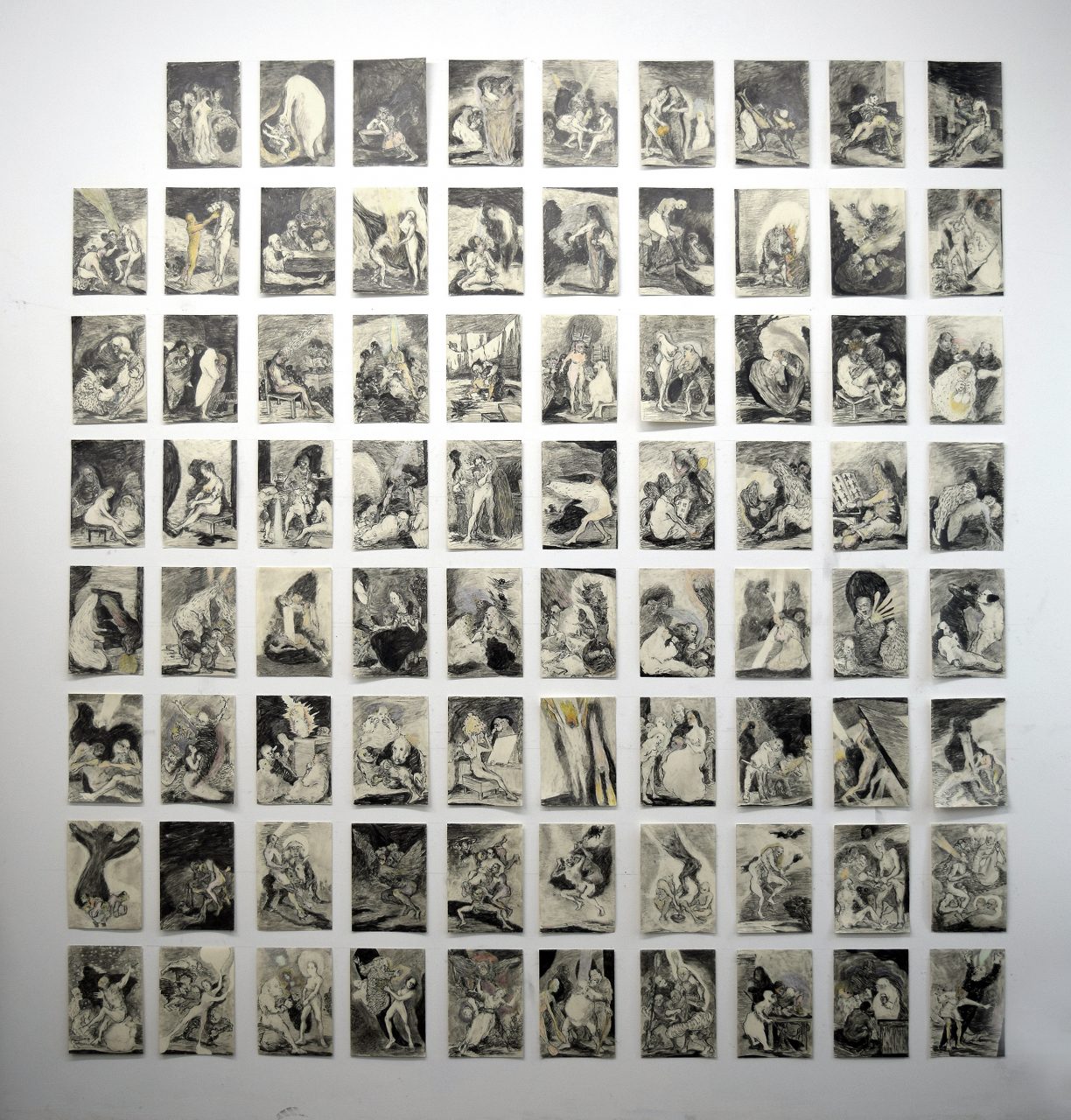
Perpetual, 2017, a work of 79 drawings based on Goya's Los Caprichos, each 29 x 21 cm, graphite and colored pencil on paper
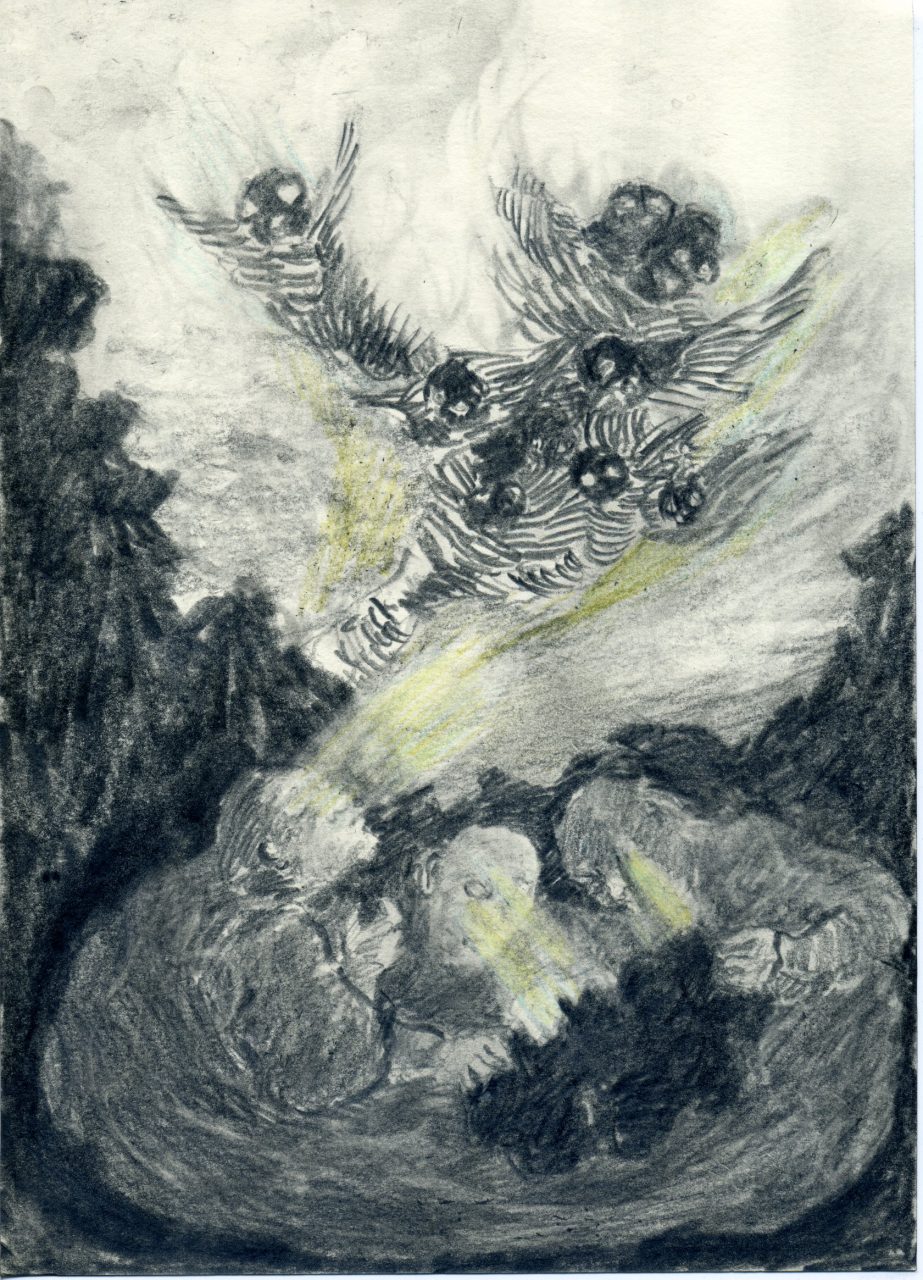
All Will Fall, from Perpetual, 2017, a work of 79 drawings based on Goya's Los Caprichos, each 29 x 21 cm, graphite and colored pencil on paper
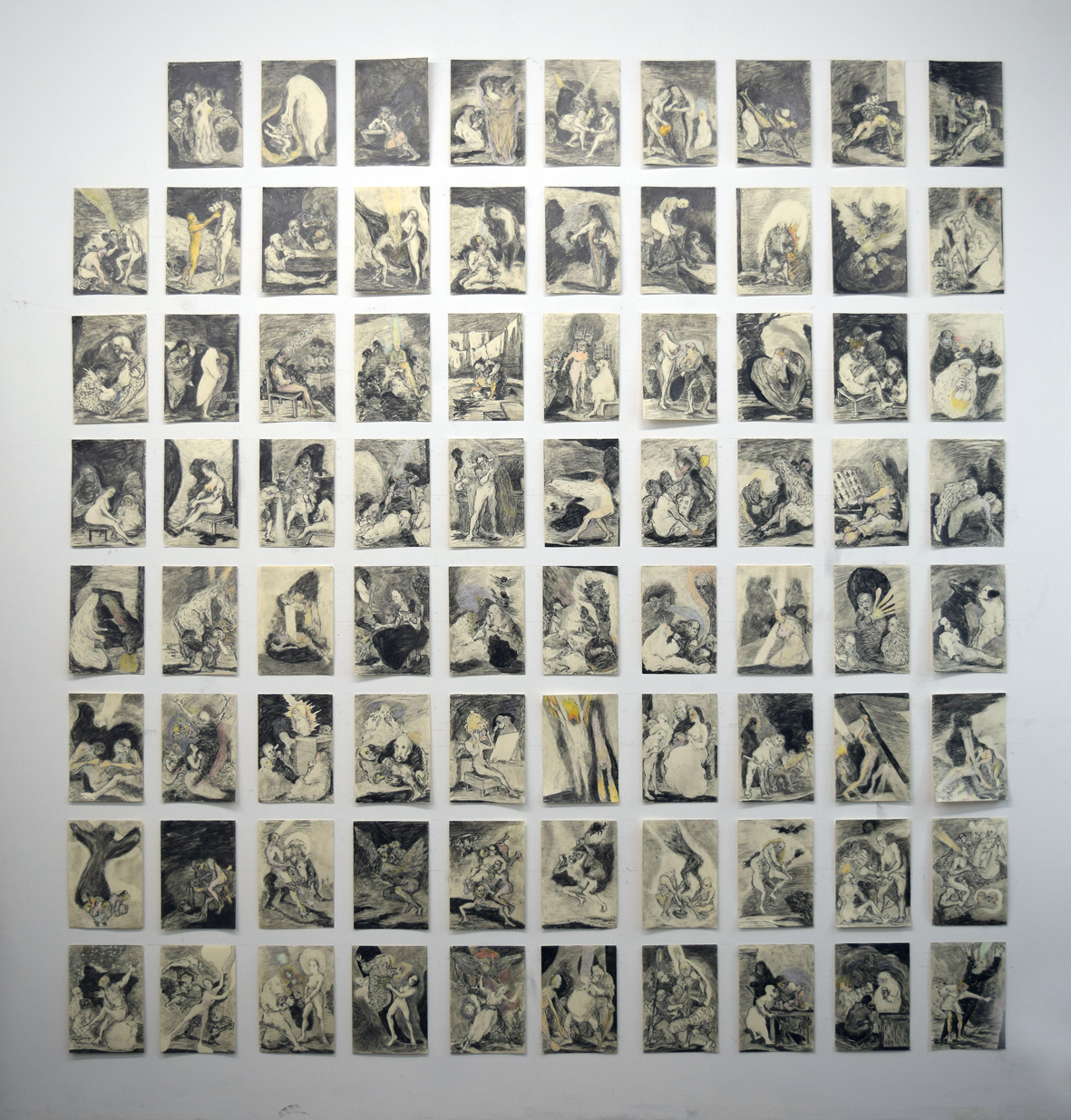
De Septentrione Ad Austrum, 2015, oil pastel on green school board paint, permanent public mural for the city of Aschersleben, Germany, 1000 x 600 cm
2016
What We Do for Love, Little Krimminals, Berlin
2015
Love and Other Machines, New Art Projects, London
2011
Whippersnapper, Galerie Fahnemann, Berlin
Berlinische Galerie, Berlin
Collection of the Land of Rhineland-Palatinate
Kupferstich Kabinett, Berlin
show all
New Art Projects, London
1987 SUNY New Paltz, BFA Painting
1999 Slade School of Fine Art, London, MFA Sculpture